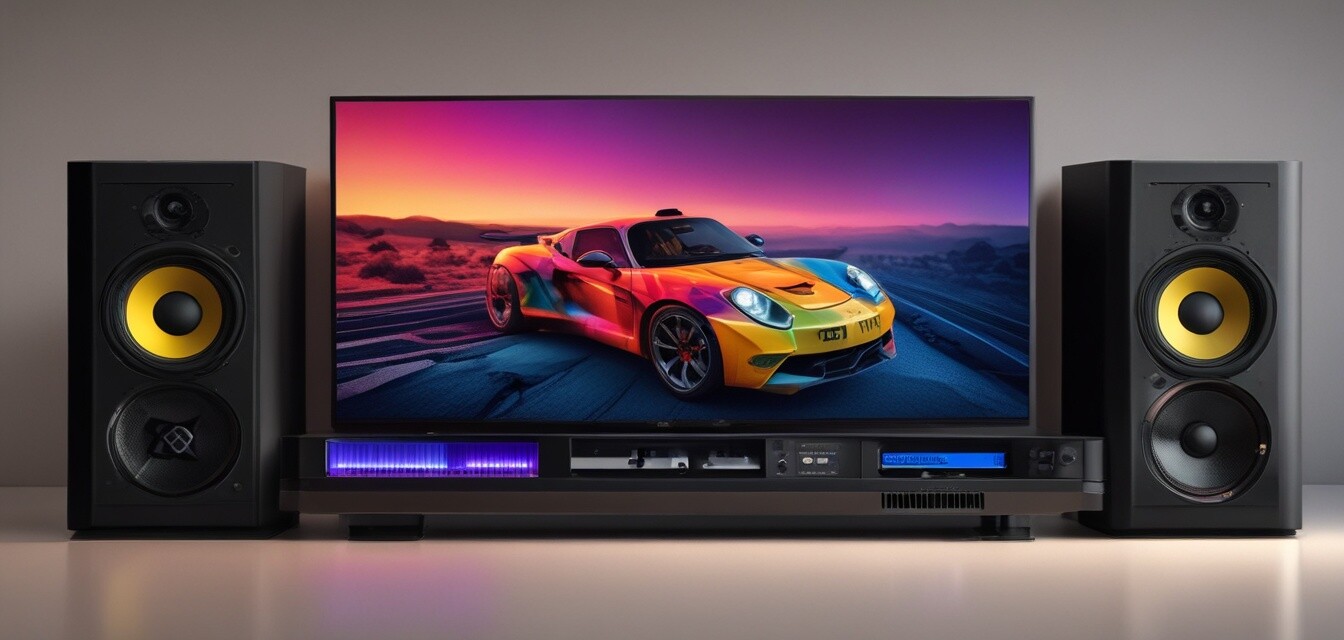
The Impact of 8K Technology on Audio Systems
- 8K technology enhances video resolution and influences audio systems significantly.
- Audio systems are adapting to support the higher fidelity of content produced in 8K.
- The synergy between visual and audio quality improves the overall entertainment experience.
- New infrastructure and standards are emerging in home viewing setups due to 8K advancements.
- Audio formats such as Dolby Atmos are becoming standard with the rise of 8K technology.
The introduction of 8K technology in televisions and media is transforming the way we experience entertainment at home. This shift is not only about picture quality but also fundamentally influences audio systems and how we perceive sound. As viewers are immersed in stunning visuals, it becomes imperative to ensure that the audio matches this enhanced quality. In this article, we will explore the impact of 8K technology on audio systems and how both are evolving in tandem.
The Rise of 8K Technology
8K resolution represents a significant leap in video quality, boasting four times the pixel density of 4K and sixteen times that of Full HD. This means that image clarity and detail are vastly improved, enriching our viewing experience. However, with great visuals, there comes a greater responsibility to deliver an equally stunning auditory experience. Here's a brief overview of 8K technology:
| Resolution | Pixel Count | Aspect Ratio |
|---|---|---|
| 8K | 7680 x 4320 | 16:9 |
| 4K | 3840 x 2160 | 16:9 |
| Full HD | 1920 x 1080 | 16:9 |
How 8K Technology Influences Audio Systems
As more content is produced in 8K, audio systems are evolving to enhance the overall experience. Here are several ways that 8K technology positively influences audio systems:
- Higher Audio Fidelity: The demand for clearer sound to match 8K visuals has led to advances in audio fidelity.
- Support for Advanced Audio Formats: 8K technology propels the adoption of formats like Dolby Atmos and DTS:X, which provide immersive sound experiences.
- Improved Connectivity: 8K devices often come equipped with advanced HDMI standards that enhance both video and audio transmission.
- Sound Calibration: Modern audio systems are utilizing machine learning to calibrate sound output based on room acoustics, ensuring the best possible setup when paired with 8K devices.
The need for compatibility
As 8K technology becomes more prevalent, audio systems must be compatible to deliver a complete experience. Compatibility considerations include:
- Ensuring your speakers or soundbar support the latest audio codecs.
- Utilizing devices with HDMI 2.1 ports that support both 8K resolution and advanced audio formats.
- Assessing system requirements for home theater setups that aim to leverage 8K technology.
Pros
- Enhanced viewing and listening experience.
- Greater detail in sound textures.
- Integration of new audio technologies.
- More immersive media experiences.
Cons
- Higher costs for equipment upgrades.
- Compatibility issues with older devices.
- Need for new cables and infrastructure.
The Future of Audio in the 8K Era
Looking ahead, the integration of 8K technology suggests that audio systems will further evolve. Here are some anticipated trends:
- Seamless Integration: Expect devices to integrate not only audio but also video and smart capabilities with ease.
- Smart Audio Systems: Machine learning and AI will play significant roles in developing smarter audio systems that adapt to user environments.
- High-Resolution Streaming: As streaming services adapt to 8K, expect simultaneous advancements in audio streaming to match.
The Essential Setup for 8K and Audio Pairing
The right combination of devices is crucial for optimizing your home setup. Below is a checklist of essential components for achieving the best sound and visual quality:
- 8K TV or projector with HDMI 2.1 support
- High-quality soundbar or surround sound system
- Supported audio formats (Dolby Atmos, DTS:X)
- High-speed HDMI cables
- Compatible media player or streaming service
Tips for Beginners
- Research the compatibility of your existing audio system with 8K devices.
- Invest in high-quality cables that support 8K transmission.
- Consider hiring a professional for setup to maximize your audio-visual experience.
The influence of 8K technology on audio systems represents a remarkable convergence of sound and vision, leading to rich media experiences that captivate audiences. As this trend continues, businesses that adapt to these changes will likely thrive in a competitive market.
For more insights into the latest trends and product recommendations, check out our News and Trends category.